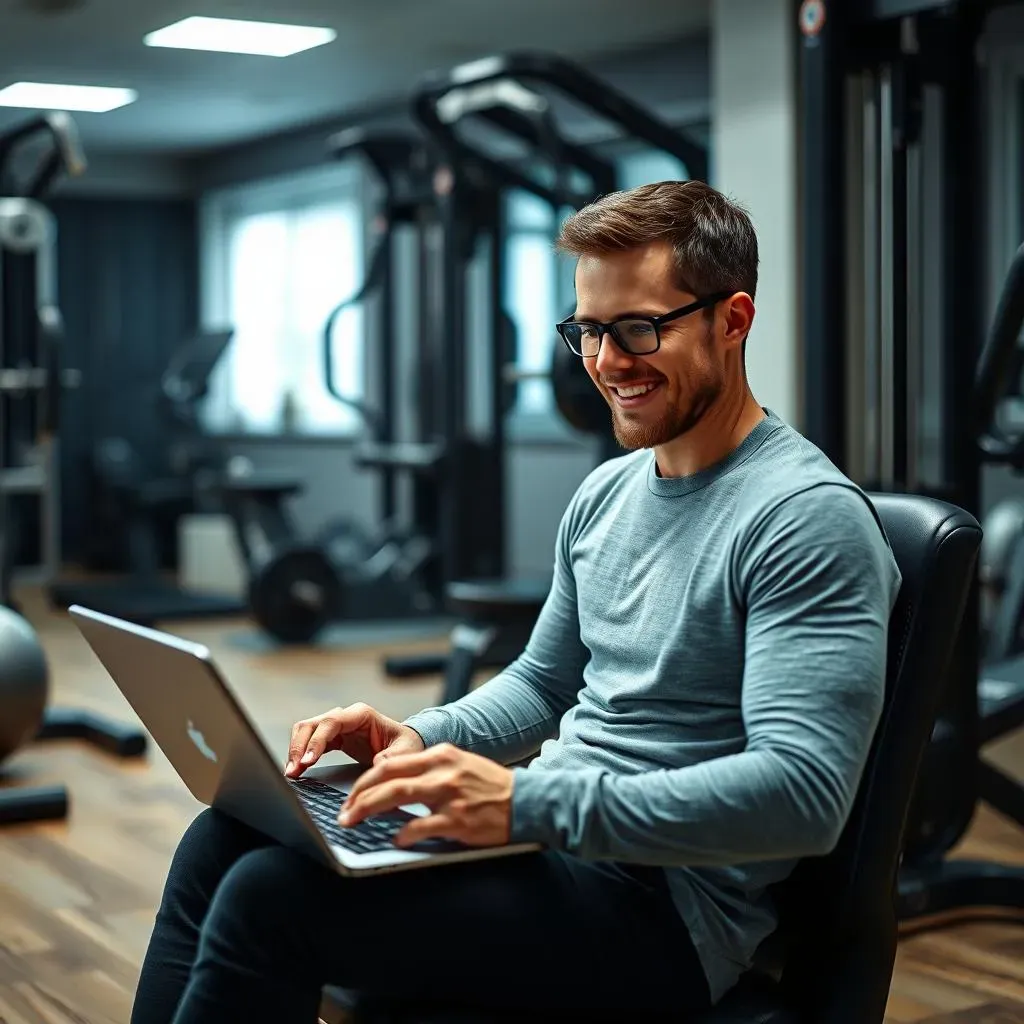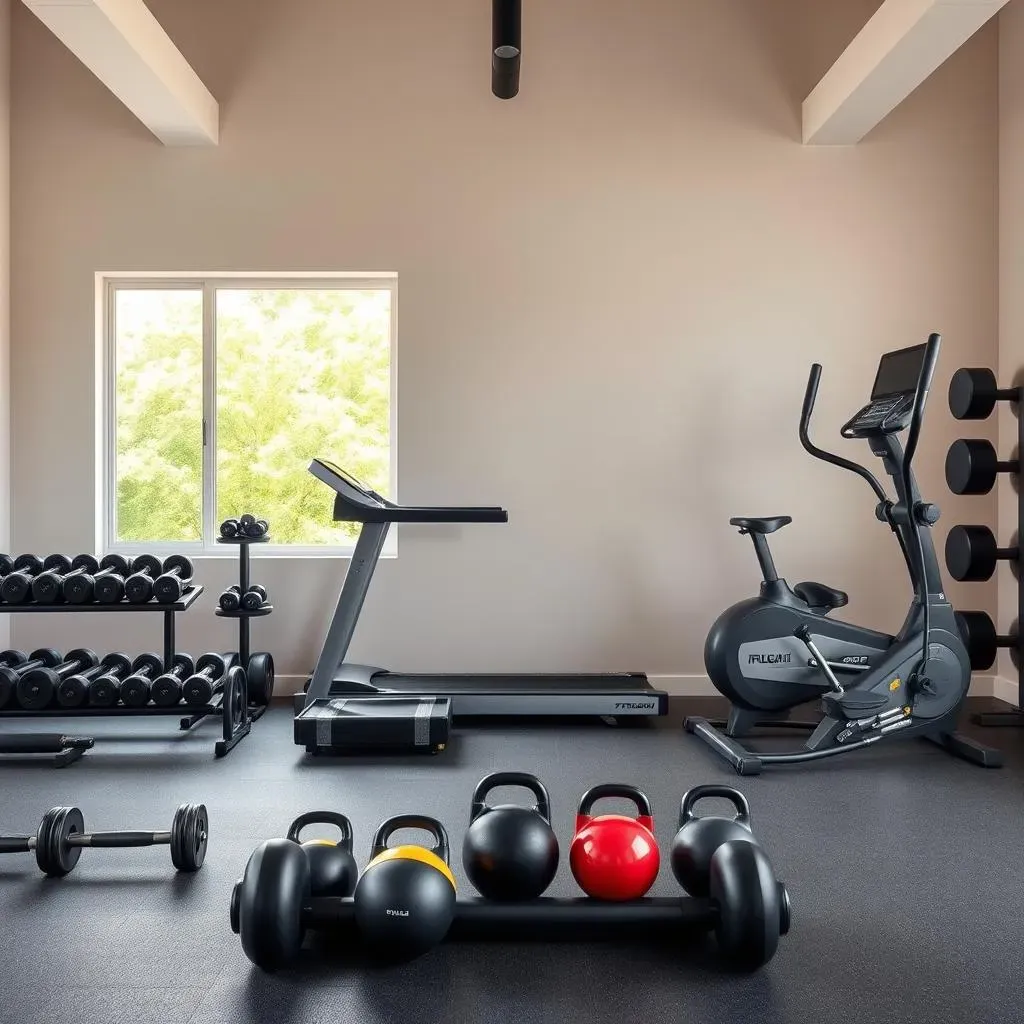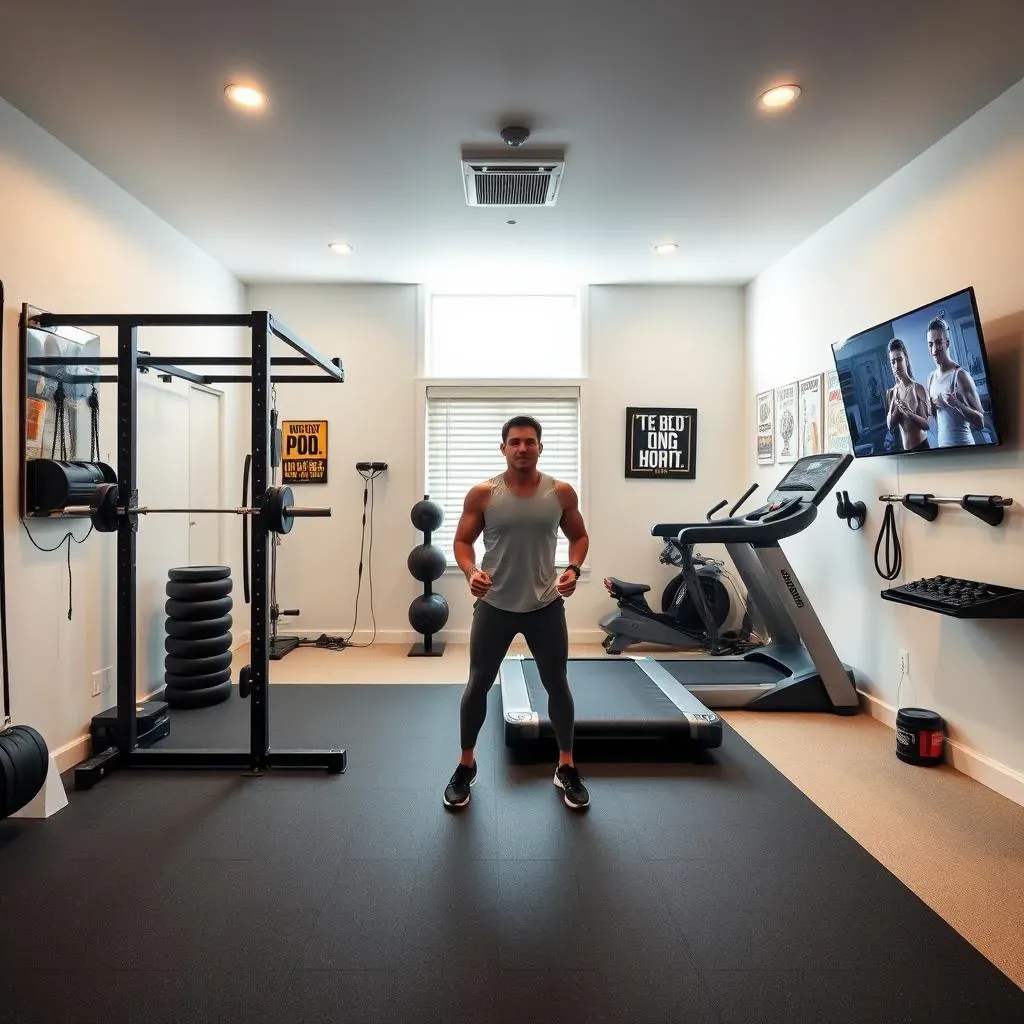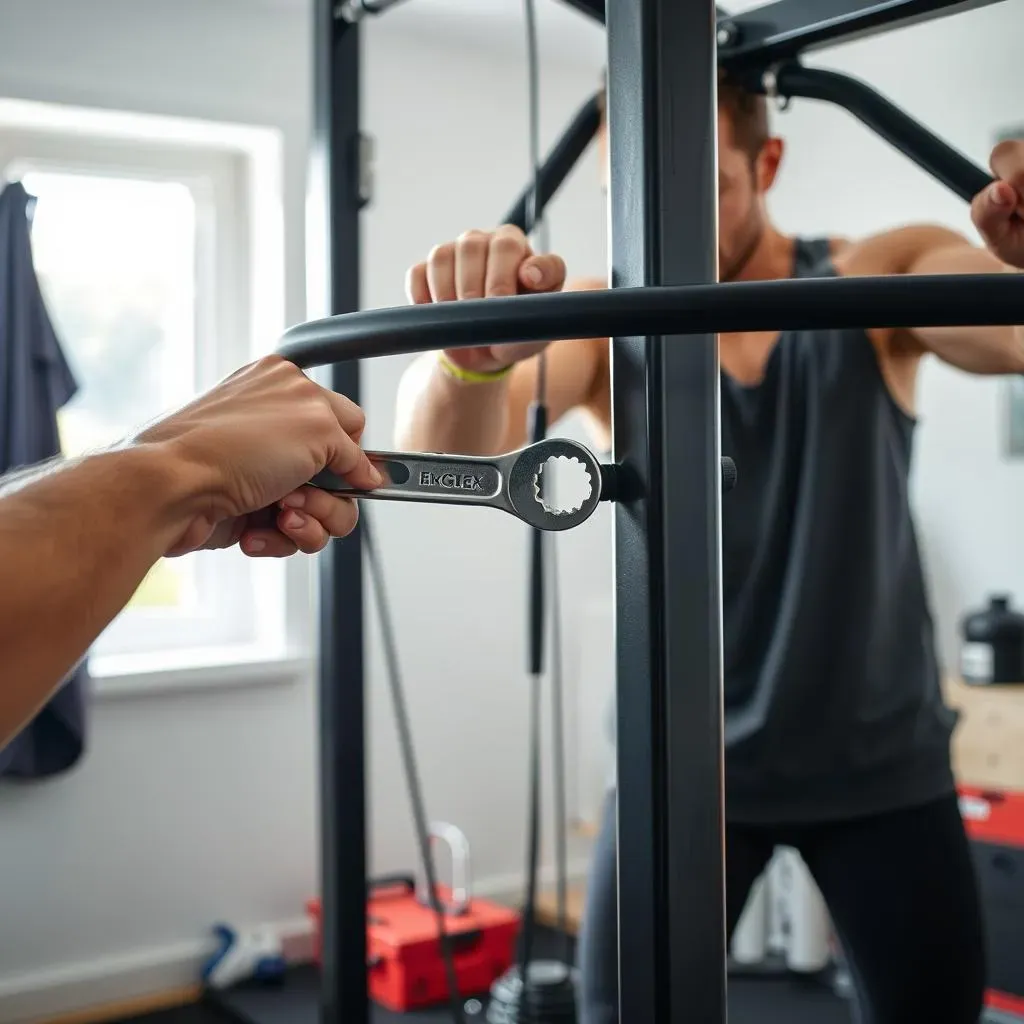Table of Contents
Tired of crowded gyms and inconvenient workout schedules? You're not alone. Many people are now looking into building their own home gyms, but the big question always is: where can I buy home gym equipment near me? The search for the perfect treadmill, weight set, or yoga mat can feel overwhelming, with countless options and retailers vying for your attention. This guide is designed to cut through the noise and provide you with a clear roadmap to finding the best home gym equipment, whether you're looking for local stores or reliable online retailers. We'll explore what to consider when making your purchases, how to set up your space for maximum effectiveness, and how to maintain your equipment so that it lasts. Get ready to transform your fitness routine and achieve your goals from the comfort of your own home. Let's dive in!
Finding Home Gym Equipment Near Me: Local Options
Finding Home Gym Equipment Near Me: Local Options
Sporting Goods Stores: A Solid Starting Point
When you're on the hunt for "home gym equipment near me," sporting goods stores are often the first places that come to mind, and for good reason. Big names like Dick's Sporting Goods or local equivalents usually have a dedicated fitness section. What’s great about these stores is the variety; you can find everything from basic dumbbells and resistance bands to treadmills and weight benches. It's a one-stop shop where you can compare different brands and types of equipment side-by-side. Plus, they frequently have sales and promotions, especially around New Year's or before summer.
However, don't expect specialized expertise. The staff might not be fitness gurus, but they can certainly point you in the right direction. Also, the quality can vary widely. You might find entry-level equipment perfect for beginners, but serious lifters may need to look elsewhere for higher-end gear. Think of these stores as a good starting point to get a feel for what's out there and maybe snag some smaller items.
Specialty Fitness Stores: Gear Up Like a Pro
If you're serious about building a quality home gym, specialty fitness stores are where it's at. These stores focus exclusively on fitness equipment, so you'll find a wider selection of higher-end brands and more specialized items that you won't see in a general sporting goods store. We're talking power racks, Olympic weight sets, functional trainers, and high-performance cardio machines. The staff at these stores are usually much more knowledgeable and can offer expert advice on what equipment is best suited for your specific fitness goals and space.
Sure, you'll probably pay a bit more than you would at a big-box retailer, but the investment is worth it for the quality and durability. Many specialty stores also offer services like equipment installation and maintenance. Plus, they often have floor models you can try out, which is crucial when you're dropping serious cash on a treadmill or elliptical. It's like test-driving a car before you buy it. Don't be afraid to ask questions, compare models, and take your time making a decision. Your body (and your gains) will thank you.
Store Type | Pros | Cons |
|---|---|---|
Sporting Goods Stores | Wide variety, frequent sales | Varying quality, less specialized staff |
Specialty Fitness Stores | High-end brands, expert advice, installation services | Higher prices |
Online Retailers for Home Gym Equipment: A Comprehensive Look
Online Retailers for Home Gym Equipment: A Comprehensive Look
Major Online Marketplaces: Convenience at Your Fingertips
so maybe you're not feeling the whole "driving to a store" thing. No sweat! Online marketplaces like Amazon, Walmart, and eBay have exploded with home gym equipment options. You can find pretty much anything you need with a few clicks, from budget-friendly yoga mats to high-tech smart treadmills. The sheer volume of choices is a huge plus, and you can often score some sweet deals, especially if you keep an eye on flash sales or discounts. Plus, customer reviews can be a goldmine for sussing out the real quality of a product.
That said, buyer beware! It's super important to read the fine print. Check the seller's ratings, warranty info, and return policies before you commit. Also, pay close attention to shipping costs and assembly requirements. That "amazing deal" might not seem so amazing once you factor in a hefty shipping fee or realize you need to hire someone to put it together. But if you do your homework, online marketplaces can be a treasure trove for building your home gym.
Shopping online offers unparalleled convenience, but always prioritize seller reputation and product reviews to avoid potential pitfalls.
Direct-to-Consumer Fitness Brands: Cutting Out the Middleman
In recent years, a bunch of direct-to-consumer (DTC) fitness brands have popped up, offering high-quality equipment straight from the manufacturer. Companies like Peloton, Mirror, and Tonal have disrupted the industry by selling directly to customers online, often with subscription-based workout programs baked in. The appeal here is premium quality, innovative features, and a more personalized fitness experience. You're not just buying a treadmill; you're buying into a whole ecosystem of workouts and community.
Of course, this level of quality and innovation comes at a price. DTC fitness equipment tends to be more expensive than what you'd find on Amazon or at a sporting goods store. And since you're buying directly from the brand, you might not have as much flexibility in terms of returns or exchanges. However, if you're looking for a top-of-the-line, immersive fitness experience, DTC brands are definitely worth a look. Just be sure to do your research and compare different brands before you make a commitment.
Retailer Type | Pros | Cons |
|---|---|---|
Major Online Marketplaces | Huge selection, potential for deals | Variable quality, shipping costs |
Direct-to-Consumer Brands | Premium quality, innovative features | Higher prices, less return flexibility |
What to Consider When Buying Home Gym Equipment
What to Consider When Buying Home Gym Equipment
so you're ready to drop some cash on home gym equipment? Awesome! But before you go wild, let's talk strategy. The first thing to nail down is your fitness goals. Are you trying to bulk up like a bodybuilder, slim down for summer, or just maintain a decent level of fitness? Your goals will dictate the type of equipment you need. A powerlifter will need a squat rack and Olympic weights, while someone focused on cardio might prioritize a treadmill or elliptical. Also, think about what types of workouts you actually enjoy. There's no point in buying a fancy spin bike if you hate cycling. Choose activities you'll stick with, not just what looks good on Instagram.
Next up: space. Be brutally honest with yourself about how much room you actually have. Measure your workout area and map out where everything will go. Nothing's worse than buying a treadmill only to realize it takes up half your living room. Also, consider the ceiling height, especially if you're planning on doing any overhead exercises. And don't forget about flooring! You'll want something that can handle heavy weights and protect your floors from damage. Rubber mats are a popular choice, but you can also use interlocking foam tiles or even just a thick carpet.
Budget is another biggie. Home gym equipment can range from a few bucks for resistance bands to thousands of dollars for high-end machines. Set a realistic budget and stick to it. Remember, you don't have to buy everything at once. Start with the essentials and gradually add more equipment as your needs and budget allow. Also, don't be afraid to explore used equipment. You can often find great deals on Craigslist or Facebook Marketplace. Just be sure to inspect the equipment carefully before you buy it to make sure it's in good working condition.
Finally, think about quality and durability. Cheap equipment might seem tempting, but it's usually a false economy. It's better to invest in higher-quality equipment that will last for years than to replace flimsy gear every few months. Look for equipment with solid construction, sturdy frames, and good warranties. Read reviews and do your research before you buy. Your body (and your wallet) will thank you in the long run.
Factor | Considerations |
|---|---|
Fitness Goals | Strength training, cardio, flexibility |
Available Space | Measurements, ceiling height, flooring |
Budget | Realistic spending limit, used equipment options |
Quality & Durability | Construction, warranty, reviews |
Setting Up Your Home Gym: Tips and Tricks
Setting Up Your Home Gym: Tips and Tricks
Maximize Your Space: Layout and Design
Alright, so you've got your equipment, now it's time to transform that spare room (or garage corner) into your personal fitness sanctuary. First things first: layout. Think about flow. You want to be able to move freely between exercises without bumping into stuff. Start by placing your largest equipment, like a treadmill or weight rack, then arrange smaller items around them. Leave enough space for stretching, floor exercises, and, you know, not tripping over things. Consider designating specific zones for different types of workouts. Maybe a cardio area, a strength training area, and a flexibility zone. This will help you stay organized and focused.
Lighting is also key. Natural light is great, but if you're working out in a basement or garage, you'll need to get creative. Bright, even lighting is best to avoid shadows and eye strain. Consider adding mirrors to make the space feel bigger and to check your form. And don't forget about ventilation! A stuffy, poorly ventilated gym is a recipe for disaster. Open a window if you can, or invest in a good fan or air purifier. Trust me, you'll thank me later.
Essential Flooring and Safety Measures
Flooring is crucial, not just for protecting your floors, but also for providing a safe and comfortable workout surface. Rubber flooring is the gold standard for home gyms. It's durable, shock-absorbent, and easy to clean. You can get it in rolls, tiles, or mats, depending on your space and budget. If you're lifting heavy weights, thicker flooring is a must to prevent damage and reduce noise. If you're on a tight budget, interlocking foam tiles are a decent alternative, but they're not as durable as rubber. Avoid using carpet alone, as it can be slippery and difficult to clean.
Safety should always be a top priority. Invest in a good weight bench with safety catches, especially if you're lifting alone. Use spotter stands for squats and bench presses. Keep a first-aid kit handy for minor injuries. And always warm up before you start your workout and cool down afterward. It's also a good idea to have a workout buddy, even if it's just someone who can check in on you occasionally. And if you're new to weightlifting, consider hiring a personal trainer to teach you proper form and technique. A little investment in safety can save you a lot of pain (and money) in the long run.
Flooring Type | Pros | Cons |
|---|---|---|
Rubber Flooring | Durable, shock-absorbent, easy to clean | More expensive |
Foam Tiles | Affordable, easy to install | Less durable |
Tech Integration and Entertainment
Let's face it, working out can be a drag sometimes. That's where tech and entertainment come in. A good sound system can make all the difference. Blast your favorite tunes to get pumped up, or listen to a podcast to distract yourself from the pain. A TV or tablet is also a great addition, especially if you're doing cardio. Watch your favorite shows, stream workout videos, or even video chat with a friend to make the time fly by. Many modern fitness machines come with built-in screens and connectivity, allowing you to track your progress, access online classes, and even compete with other users.
Smartwatches and fitness trackers can also be valuable tools for monitoring your heart rate, calories burned, and other metrics. And don't forget about apps! There are tons of fitness apps out there that can help you create workout plans, track your progress, and stay motivated. Experiment with different options to find what works best for you. Just remember, tech is a tool, not a crutch. Don't get so caught up in the numbers that you forget to listen to your body. And always prioritize proper form over speed or intensity.
Maintaining Your Home Gym Equipment: Longevity and Care
Maintaining Your Home Gym Equipment: Longevity and Care
Regular Cleaning and Inspection
Alright, you've invested in your home gym, now let's keep it in tip-top shape! Regular cleaning and inspection are key to extending the life of your equipment and ensuring your workouts are safe and enjoyable. Think of it like taking care of a car: a little maintenance goes a long way. Wipe down your equipment after each use, especially cardio machines where sweat tends to accumulate. Use a mild soap and water solution or a disinfectant wipe. For weight benches and mats, pay attention to seams and crevices where bacteria can hide. And don't forget to vacuum or sweep the floor regularly to prevent dust and debris from building up.
Inspecting your equipment is just as important as cleaning it. Check for loose bolts, frayed cables, and worn-out parts. Tighten any loose connections and replace damaged parts immediately. For cardio machines, lubricate moving parts according to the manufacturer's instructions. And keep an eye on the condition of your flooring. Replace worn-out mats or tiles to prevent slips and falls. A little bit of preventative maintenance can save you a lot of headaches (and money) down the road.
Proper Storage and Environmental Control
How you store your equipment and the environment in which it's kept can have a big impact on its longevity. Store weights and dumbbells on a rack to prevent them from rolling around and causing damage. Hang resistance bands and jump ropes to prevent them from tangling. And cover your equipment when it's not in use to protect it from dust and moisture. If you live in a humid climate, consider using a dehumidifier to prevent rust and corrosion. And avoid storing your equipment in direct sunlight, as it can fade and crack the materials.
Temperature control is also important. Extreme temperatures can damage electronic components and cause materials to warp or crack. If your gym is in a garage or basement, consider insulating it to maintain a more consistent temperature. And don't forget about pest control! Mice and other rodents can wreak havoc on your equipment, chewing through cables and upholstery. Use traps or repellents to keep them away. By taking a few simple steps to protect your equipment from the elements, you can keep it looking and functioning like new for years to come.
Maintenance Task | Frequency | Notes |
|---|---|---|
Wipe down equipment | After each use | Use mild soap and water |
Inspect for loose parts | Monthly | Tighten or replace as needed |
Lubricate moving parts | Every 3-6 months | Follow manufacturer's instructions |
Check flooring | Quarterly | Replace worn-out sections |
Addressing Specific Equipment Needs
Different types of equipment have different maintenance needs. Cardio machines, for example, require regular belt lubrication and motor maintenance. Check the owner's manual for specific instructions. Weight machines may need cable adjustments and lubrication of moving parts. And free weights should be inspected for cracks or damage. If you're not comfortable performing these tasks yourself, consider hiring a professional to service your equipment. Many fitness equipment retailers offer maintenance and repair services.
For electronic equipment, keep the software up to date and protect it from power surges. Use a surge protector to prevent damage from lightning strikes or power outages. And don't forget about the accessories! Clean your yoga mats regularly to prevent the spread of bacteria. Wash your workout clothes after each use to prevent odors and stains. And replace worn-out shoes to prevent injuries. By taking care of the little things, you can ensure that your entire home gym stays in top condition.
Conclusion: Your Fitness Journey Starts Now
Finding the right home gym equipment doesn't have to be a daunting task. By exploring local options, considering reputable online retailers, and keeping your specific needs and budget in mind, you can create a workout space that's perfect for you. Remember to prioritize quality, consider maintenance, and don't be afraid to ask for expert advice. Now that you know where can I buy home gym equipment near me, it’s time to take the next step and invest in your health and well-being. Your personalized fitness journey awaits!